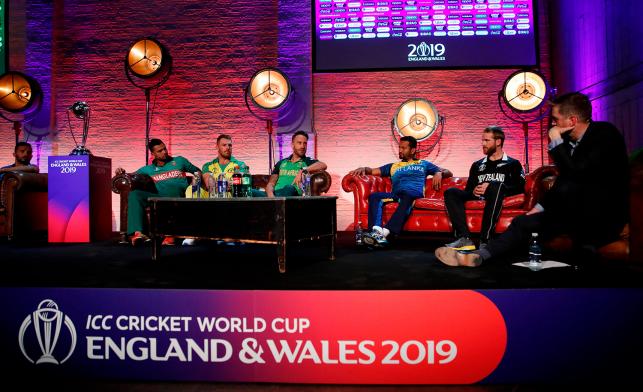ll the usual suspects have gathered for the World Cup at the home of cricket, and yet something is missing.
The rest of the world.
When the first ball is bowled at The Oval on Thursday, only 10 teams will be vying to be world champion, the smallest number since 1992.
After the hugely popular, successful, and entertaining 2015 World Cup in Australia and New Zealand, the format was slashed from 14 teams to 10. Qualifying was a prize for only two teams. No Associate members qualified.ARTICLE CONTINUES AFTER AD
So, no Zimbabwe for the first time in 36 years. No Ireland for the first time in 12. No other recent competitors such as Scotland, Kenya, Netherlands, or Canada.
Yes, more often than not those teams were fodder for the big guns, but they were improvers who delivered some of the World Cup’s greatest moments.
The moments broadcasters love to replay during rain delays, and moments when the world took notice of the Cricket World Cup.
Occasions when Ireland upset Pakistan in 2007, England in 2011 with Kevin O’Brien’s comeback century, and the West Indies in 2015; when Zimbabwe beat Australia in 1983, England in 1992 with Eddo Brandes’ four-for, and India and South Africa in 1999; and when Kenya beat Sri Lanka in 2003.
Add Canada’s John Davison teeing off against the West Indies in 2003 with what was then the World Cup’s fastest century.
Who doesn’t like surprises? Well, cricket powerbrokers India, England, and Australia didn’t.
They led a demand in 2010 for “more competitive” World Cups by reducing the field to the size of the Champions Trophy. That way, they could ensure that, as the favourite teams for TV and advertisers, they would be in the tournament for at least a month of the six-week saga.
But at a time when FIFA is planning to add 16 extra teams to the soccer World Cup, the Rugby World Cup wants to add four, and the Olympics added five new sports, reducing numbers in cricket’s showpiece is contrary to administrative mantras about developing the global game.
In spite of all this, the 12th Cricket World Cup ought to be a smash hit.
The English hosts have done more than most to make it so. Immediately after the humiliating group-stage exit four years ago, England transformed itself by selecting short-form cricket specialists, and adopting the positive, aggressive approach of 2015 finalists Australia and New Zealand.
They have not lost a home series in four years, won 57 of 86 ODIs, returned to No. 1 a year ago, and broken the world record total twice. Seven players in the England squad have scored centuries, the most of any team.
“We’re in as strong a position as we could be at this stage,” captain Eoin Morgan says.
If anything will stop them, it will be the weight of expectations. England still seeks a first major ODI title. It has lost three World Cup finals and two Champions Trophy finals. It was favored at the 2017 Champions Trophy, also at home, and fell to Pakistan on a slow pitch in the semifinals.
Conditions have changed. Swing and seam are less impactful as English pitches have become flatter, encouraging higher scores: 300 has become a par score for an ODI. In the England-Pakistan series this month, seven of the eight totals were 300-plus.
The other was 297.
India come looking for a third World Cup crown with the most experienced squad in the competition. But there’s a feeling that if bowlers can get through the mighty top order of Shikhar Dhawan, captain Virat Kohli, and Rohit Sharma, then the middle order is vulnerable.
There’s a wave of newcomers who are set to light up the tournament, among them Afghanistan bowling allrounder Rashid Khan, the top allrounder in ODIs already at age 20, and Jasprit Bumrah, the No. 1-ranked ODI bowler who is on track to become the fastest Indian to 100 wickets.
While they make their World Cup debut, others will make their bow.













